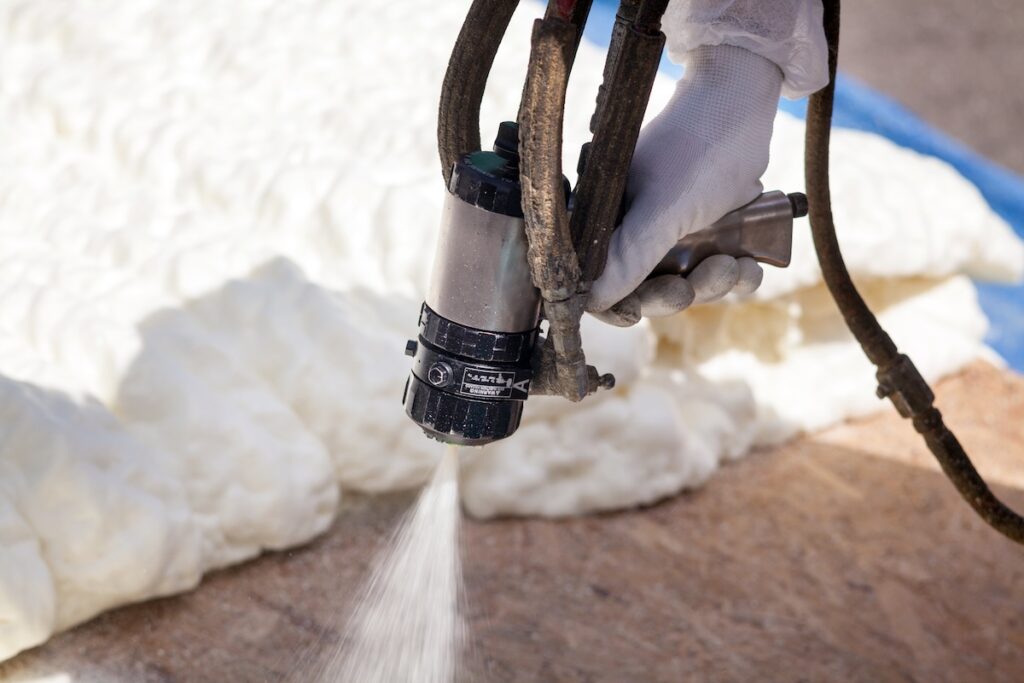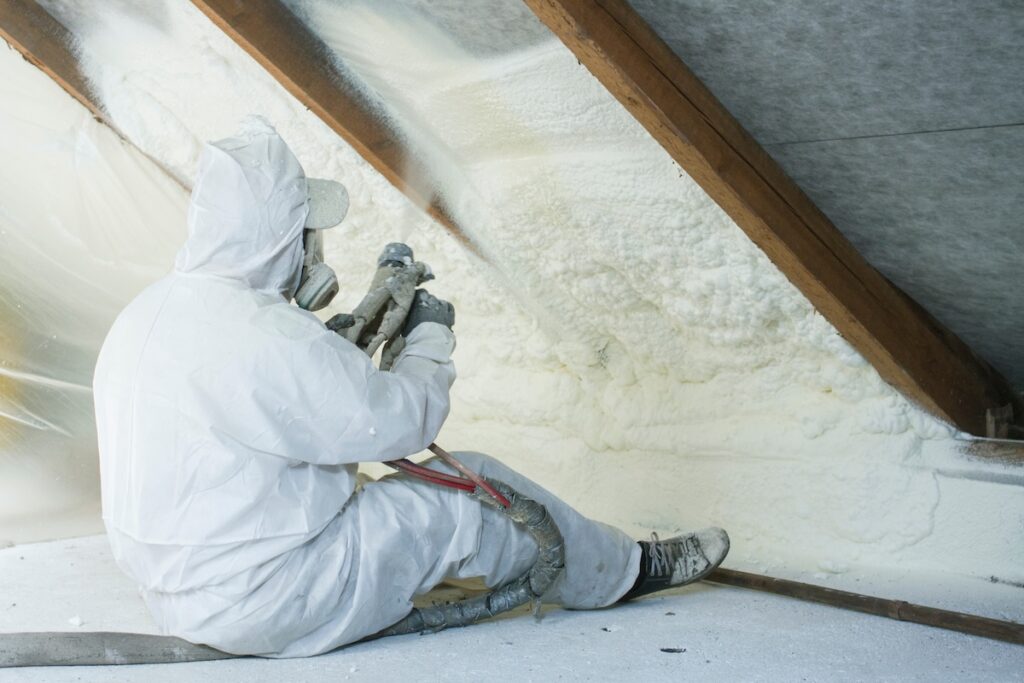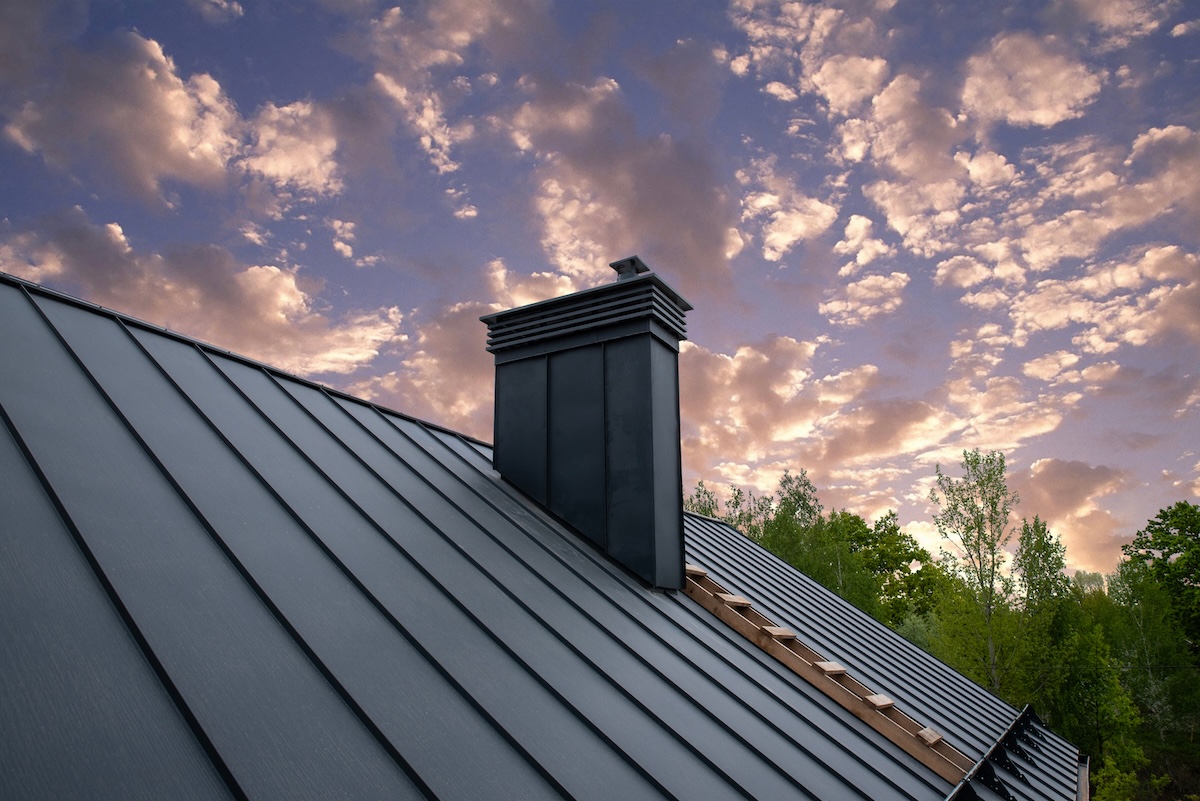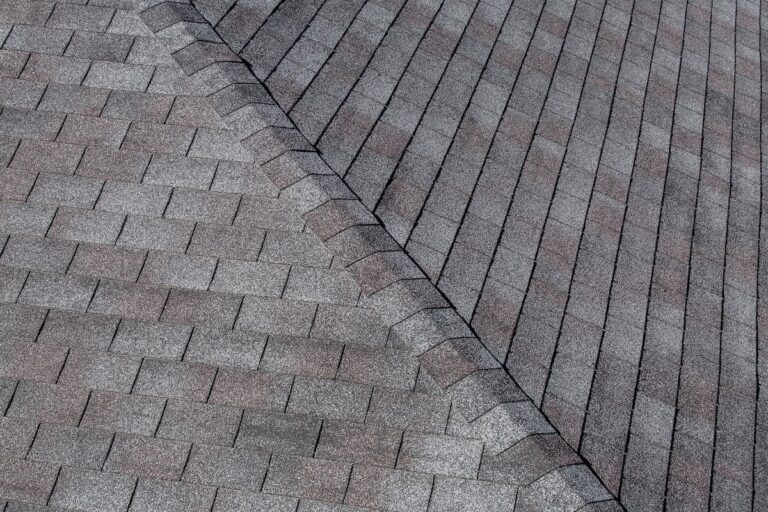Metal roof insulation plays a critical role in maximizing energy efficiency, indoor comfort, and long-term roof performance for your home. Whether you’re installing a new metal roof or upgrading your current one, understanding your insulation options is key to getting the most out of your investment.
- Enhanced efficiency: The right insulation can lower heating and cooling costs year-round.
- Moisture protection: Proper insulation prevents condensation and moisture buildup beneath the roof.
- Noise reduction: Insulation adds soundproofing, making your metal roof quieter during rain or hailstorms.
In this guide, we’ll break down the top types of metal roof insulation, their benefits, and what you should consider before making a decision.
❗️ Why Insulation Matters Under a Metal Roof
Before diving into materials, it’s important to understand why insulation is essential in metal roofing systems. Without it, your home could face extreme temperature shifts, poor energy efficiency, and long-term structural issues.

Thermal Regulation
Metal roofs can absorb and transfer heat rapidly. Insulation acts as a thermal barrier, helping your home stay cooler in the summer and warmer in the winter. This translates into more consistent indoor temperatures and lower utility bills.
Moisture and Condensation Control
When warm indoor air meets the cold underside of a metal roof, condensation forms. Over time, this can lead to mold, mildew, and even structural rot. Insulation reduces temperature variation, preventing moisture buildup.
Acoustic Comfort
One common concern with metal roofing is noise during rain or hailstorms. High-quality insulation muffles these sounds, adding an extra layer of peace and quiet inside your home.
⭐️ Most Common Metal Roof Insulation Materials
Not all insulation is created equal. Different materials offer varying levels of thermal performance, moisture resistance, and cost efficiency. Here are the top options used in residential metal roofing.
Fiberglass Batts
Fiberglass is one of the most widely used insulation materials due to its affordability and ease of installation. It’s typically installed between the rafters in the attic or roof cavity.
- Cost-effective option: Fiberglass is one of the most budget-friendly choices for homeowners.
- Decent R-value: Offers good thermal resistance, especially when installed correctly.
- Moisture risk: Not ideal in high-humidity areas unless combined with vapor barriers.
Rigid Foam Boards
Rigid foam boards like polyisocyanurate, XPS (extruded polystyrene), or EPS (expanded polystyrene) provide high R-values in thin profiles.
- High thermal performance: Delivers excellent insulation with minimal thickness.
- Moisture-resistant: Great for areas prone to condensation.
- Versatile application: Can be installed above or below the roof deck.
Spray Foam Insulation
Spray polyurethane foam (SPF) is applied directly to the underside of the metal roof, expanding to fill gaps and create an airtight seal.
- Superior air sealing: Great for irregular or hard-to-reach areas.
- High R-value: Provides some of the best thermal resistance available.
- Cost and complexity: More expensive and requires professional installation.

Radiant Barriers
Radiant barriers reflect radiant heat instead of absorbing it, making them especially useful in hot climates.
- Heat reflection: Helps keep attics and living spaces cooler in summer.
- Best when combined: Works well when paired with other insulation materials.
- Not a standalone solution: Doesn’t offer thermal resistance on its own.
Mineral Wool
Made from stone or slag, mineral wool provides good thermal performance along with fire resistance and soundproofing.
- Excellent soundproofing: Reduces noise from rain and hail.
- Fire-resistant: Non-combustible and safe for high-temperature areas.
- Heavier material: Requires careful handling and support.
🔑 5 Key Factors When Choosing Metal Roof Insulation
Choosing the right metal roof insulation means weighing more than just the price tag. These considerations will help you make a smart, long-lasting decision.
1. Climate Conditions
- Cold climates: Look for high R-value materials like spray foam or rigid foam boards to minimize heat loss.
- Hot climates: Radiant barriers paired with foam boards can improve cooling efficiency.
- Humid areas: Prioritize moisture-resistant options and vapor barriers to reduce condensation risk.
2. Roof Assembly Type
- Open framing: Batts and spray foam are ideal for exposed rafters.
- Closed decking: Foam boards and radiant barriers work best above sheathing.
- Retrofits: Consider thinner materials or blown-in insulation if roof access is limited.
3. Budget
- Entry-level: Fiberglass batts offer good insulation at the lowest cost.
- Mid-range: Rigid foam balances price and performance.
- Premium: Spray foam gives top-tier results but at a higher price point.
4. Moisture Management
- Ventilation compatibility: Some materials (like spray foam) may reduce airflow, requiring mechanical ventilation.
- Vapor barriers: Essential in preventing trapped moisture and mold.
- Deck protection: Choose insulation that won’t deteriorate or rot over time.
5. Sound Dampening
- Noise concerns: Go with mineral wool or spray foam to reduce impact noise.
- Multi-layer solutions: Pair insulation with underlayments designed for acoustics.
- Roof slope: Steeper roofs may transmit sound differently than low-slope ones.
✅ Pros and Cons of Each Insulation Type
Understanding the tradeoffs of each insulation material helps clarify which is best for your specific roofing system and home environment.

Fiberglass
- Pros: Low cost, easy to install, readily available.
- Cons: Poor moisture resistance, needs vapor barrier, lower R-value per inch.
Rigid Foam
- Pros: High R-value, water-resistant, good for tight spaces.
- Cons: More expensive, may require multiple layers for optimal performance.
Spray Foam
- Pros: Airtight seal, highest thermal performance, great for air sealing.
- Cons: High cost, requires professional installation, can trap moisture if not properly ventilated.
Radiant Barrier
- Pros: Reflects radiant heat, lightweight, easy to install.
- Cons: Minimal insulation value on its own, ineffective in cold climates.
Mineral Wool
- Pros: Fireproof, soundproof, water-resistant.
- Cons: Heavy, more expensive, harder to cut and handle.
👍 6 Best Practices for Installing Metal Roof Insulation
Whether you’re hiring a contractor or taking a DIY approach, these best practices can help maximize the effectiveness of your metal roof insulation.
- Perform a Moisture Assessment: Identify existing condensation issues before adding insulation.
- Seal Gaps and Air Leaks: Use foam or caulk around joints, vents, and penetrations to improve energy efficiency.
- Use a Vapor Barrier: Always install a vapor barrier in humid climates or beneath fiberglass to prevent mold.
- Ensure Proper Ventilation: Maintain airflow between the insulation and roof deck when needed to avoid trapped moisture.
- Layer for Efficiency: Combine insulation types—like foam boards with radiant barriers—for maximum performance.
- Work With a Pro: A qualified roofing contractor can help you choose the right insulation and ensure it’s installed to code.
🏠 Upgrade Your Roof With Johnson Restoration
Choosing the right metal roof insulation improves comfort, lowers energy bills, and protects your home for decades to come. At Johnson Restoration, we help homeowners choose the best materials for their climate, budget, and roof design, ensuring results that last.
Ready to upgrade your roof’s performance? Contact Johnson Restoration today for expert advice on insulation, roof replacements, and energy-efficient solutions tailored to your home.







